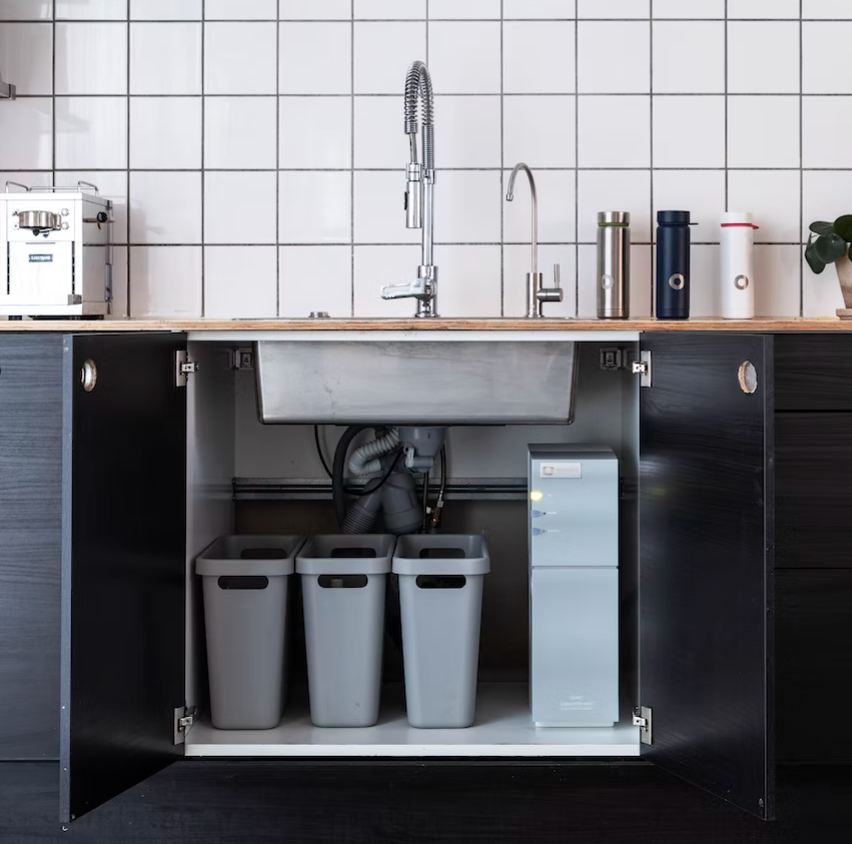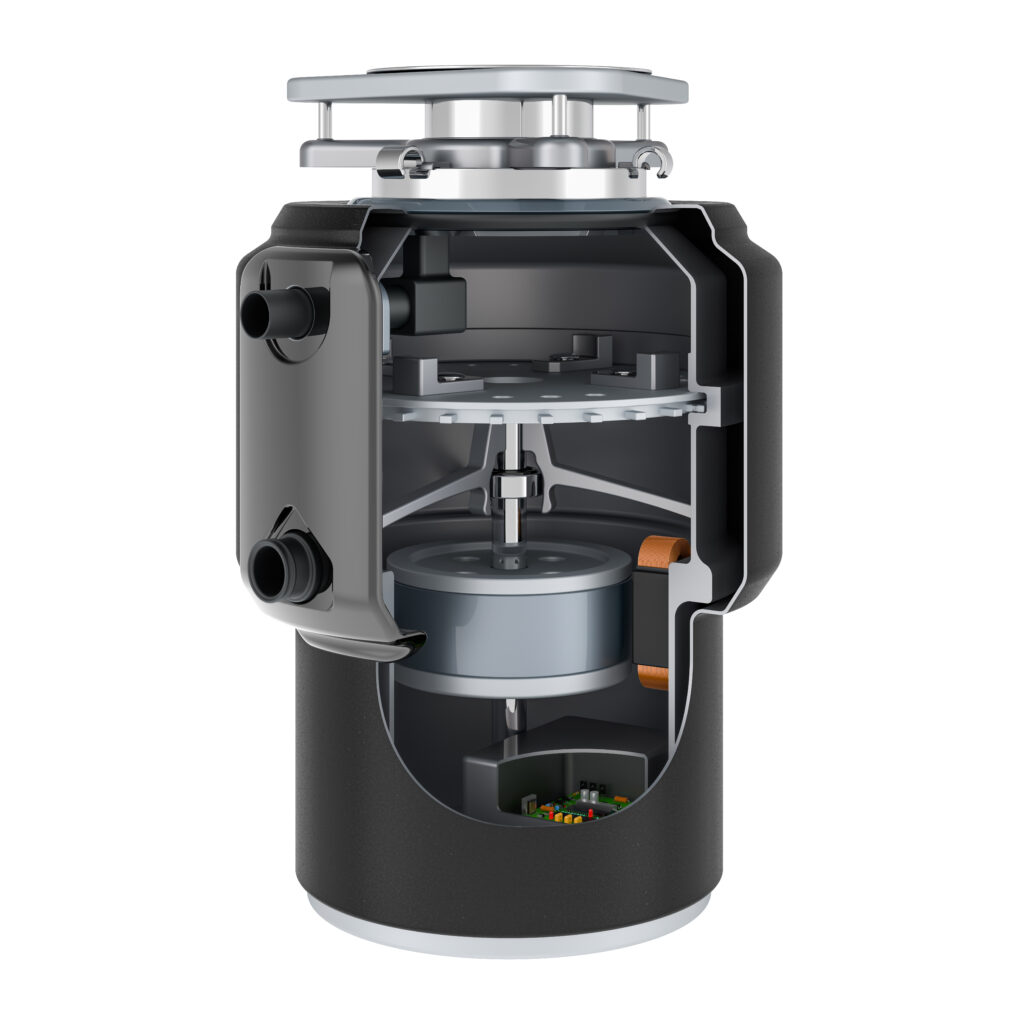
Garbage disposals have revolutionized the way we handle food waste in modern kitchens. These remarkable appliances offer convenience, efficiency, and environmental benefits. However, misconceptions surrounding garbage disposals, particularly the presence of blades, persist. We will delve deeper into the inner workings of garbage disposals, providing comprehensive insights into their mechanisms and debunking the myths surrounding blades. Let’s explore this fascinating topic to gain a thorough understanding of how garbage disposals operate.

Understanding Garbage Disposals
Garbage disposals are an integral part of the kitchen plumbing system. Installed beneath the kitchen sink, these appliances facilitate the disposal of food waste. A typical garbage disposal consists of essential components such as a motor, a grinding chamber, an impeller or shredder ring, and a flywheel. The connection to the plumbing system enables the waste to be easily flushed away with water.
The Grinding Mechanism
Contrary to popular belief, garbage disposals do not employ traditional blades commonly found in blenders or food processors. Instead, they rely on a grinding mechanism to effectively break down food waste. This mechanism primarily comprises an impeller or shredder ring attached to a rotating plate called the flywheel. When the flywheel spins, the impeller or shredder ring forcefully grinds the food waste against the inner wall of the grinding chamber.
The Shredder Ring
The shredder ring plays a vital role in the grinding process of garbage disposals. Typically made of hardened steel or a similarly durable material, these teeth do not function as blades in the traditional sense but rather as crushing and grinding elements. As the food waste comes into contact with the shredder ring, the teeth exert pressure, effectively pulverizing it into fine particles.
When the garbage disposal is turned on, the shredder ring remains stationary while the impeller or flywheel rotates. As food waste enters the grinding chamber, it comes into contact with the shredder ring’s teeth. It is important to note that these teeth do not function as traditional blades, as their primary purpose is to crush and grind the food waste rather than slice or chop it.

The Flywheel
The impeller or flywheel is a rotating plate located above the shredder ring. It is connected to the motor shaft of the garbage disposal and spins at a high speed when the disposal is activated. The rotating motion of the impeller or flywheel creates the necessary force to push the food waste against the shredder ring’s teeth.
As the impeller or flywheel rotates, it forcefully propels the food waste against the stationary shredder ring. This grinding action breaks down the waste into smaller particles, making it easier to flush through the plumbing system.
The grinding mechanism’s efficiency is enhanced by the high speed and power of the motor, which provides the necessary force to effectively pulverize the food waste.
Advantages of the Grinding Mechanism
The grinding mechanism of garbage disposals offers numerous advantages over conventional food waste disposal methods. Let’s explore some of the notable benefits:
- Efficient Waste Management: By breaking down food waste into smaller particles, garbage disposals contribute to reducing the amount of waste sent to landfills, thus minimizing environmental impact.
- Convenience: Garbage disposals eliminate the need for separate containers to store and dispose of food waste. This leads to reduced odor and enhanced cleanliness in the kitchen.
- Time-saving: With a garbage disposal, you can dispose of food waste promptly while cleaning up after meals, saving time and effort.
- Odor Control: The swift disposal of food waste helps prevent unpleasant odors in the kitchen, improving overall hygiene and creating a more pleasant environment.
- Reduced Plumbing Issues: Proper use and maintenance of garbage disposals can prevent plumbing problems caused by food waste buildup in pipes, reducing the risk of clogs and blockages.

Why Do People Think They are Blades?
The misconception that garbage disposals have blades likely stems from the appearance and marketing descriptions of the shredder ring, which is a key component of the grinding mechanism in garbage disposals.
The use of terms like “blades” or “grinding blades” in marketing materials may contribute to the misconception. These terms are often employed to simplify the description of the shredder ring’s function and convey the idea of efficient food waste breakdown. However, it can lead to a misinterpretation of the actual mechanism at work in garbage disposals.
Additionally, the association of blades with appliances like blenders or food processors, which have visible cutting elements, may lead people to assume that garbage disposals operate in a similar manner. However, the grinding mechanism in garbage disposals is distinct and does not rely on traditional blades for its function.
Overall, the misconception that garbage disposals have blades is a result of misunderstanding the specific design and operation of these appliances. By understanding the inner workings of garbage disposals, we can dispel this myth and appreciate their efficient grinding mechanism for food waste disposal.
Contact White’s Plumbing Today
Whether you are considering installing a new garbage disposal or require assistance with an existing one, White’s Plumbing near Youngsville, North Carolina is your trusted plumbing partner. With our team of skilled professionals specializing in plumbing services, including garbage disposal installation, repair, and maintenance, we are dedicated to providing exceptional service. Contact us today to get started on getting your garbage disposal back to its best condition!




